- Home
- Farley Mowat
Sea of Slaughter
Sea of Slaughter Read online
Contents
The Why and the Wherefore
Map
Part I | The Fowles of Sea and Air
1. Spearbill
2. Sea Fowle
3. Swiftwings
4. The Sporting Life
5. And Other Birds of Air
Part II | Meat, Hides, and Fur
6. White Ghost
7. The Brown and the Black
8. The Musk Bearers
9. The Passing of the Buff
10. Wild Cats and Dogs
Part III | Fish out of Water
11. King Cod and the Regal Salmon
12. More Fish in the Sea?
Part IV | Lost Giants of the Sea
13. The Better Sort
14. Rorqual
15. The Little Whales
Part V | Finfeet
16. Sea Tuskers
17. Dotars and Horseheads
18. Death on Ice (Old Style)
19. Death on Ice (New Style)
Hereafter 2003
Acknowledgements
Select Bibliography
Index
About the Author
Copyright
The Why and the Wherefore
The SS Blommersdyk was a Liberty ship built of slabs of rusty steel welded into a vaguely nautical shape in a wartime yard. In mid-September, 1945, she sailed from Antwerp, laden with souvenirs of the late cataclysm destined for a war museum in Canada. I was nominally in charge of this grim cargo. A veteran at twenty-four, I was on my way home, determined to put the years of anti-life in the war behind me, desperate to find my way back to the solace of a living world where birds still sang; where creatures large and small rustled through the forests; where great ones swam in the silence of the sea.
It was a slow passage over an autumnal ocean. As the only passenger on board, I spent much of my time on the bridge at the invitation of the elderly Master. He was keenly interested in the animals inhabiting the world of waters, and, finding that I shared his pleasure in them, Captain DeWitt devised a game. Posted one on either wing of the bridge, we would peer through binoculars for hours, seeking to identify a whale or porpoise or bird before the other spotted it. Often enough the sharp-eyed old skipper made a fool of his youthful guest.
On our fourth day out of the English Channel he abruptly ordered the helmsman to haul hard a-port, then called to me, “There she blows! Old Cachalot himself!”
I watched, enthralled, as we bore slowly down on a scattering of sperm whales. They were cruising on the surface, signalling their presences along a broad arc of the horizon with watery jets. We held position in their midst for an hour and it was with reluctance that the Captain brought his ship back on her westward course.
A day or two later a pod of blue whales crossed our bows, sleek behemoths that have no equal for size or majesty on the lands or in the seas. Another day we were overtaken and entertained by a school of porpoises doing aquabatics in our bow wave. As we approached the edge of the Grand Banks I was the first to spot a thicket of smoky plumes to the northward; the skipper again altered course to intercept, and we steamed into the company of half-a-hundred bottlenose whales. Far from seeking to avoid us, they altered to collision course and came so close alongside that one big bull misted us with his steamy, fishy breath.
Time slipped quickly by on that passage. Not far from the drowned Virgin Rocks we tallied eleven kinds of seabirds in a single day, estimating their combined numbers at several hundreds of thousands. Entering the Strait of Belle Isle we passed a stately procession of fin whales outward bound; and Captain DeWitt delightedly saluted them with our hoarse steam whistle. Clearing the eastern end of Anticosti Island in the Gulf of St. Lawrence, we steamed in fog and dead calm weather through seemingly endless rafts of birds, mostly eider and scoter ducks, interspersed with faery flights of phalaropes, that rose under our bows and skittered away into the mists.
By the time we docked in Montreal, the Captain and I had logged thirty-two kinds of seabirds and ten species of sea mammals, together with such bizarre creatures as swordfish, giant jellyfish, and an enormous basking shark. For me it had been a voyage out of a long darkness... into the light of life.
The eastern seaboard inexorably drew me back to it. In the spring of 1953, my father and I sailed his portly old ketch, Scotch Bonnet, down the St. Lawrence River toward the Gulf. Just past Quebec City we had the illusion that winter had returned, for the grassy islets and the broad sweep of cattail marshes below Cap Tourmente were whitened by thousands of snow geese gathering strength for the long flight to their Arctic breeding grounds. Passing Gaspé we sailed close under the towering ledges of Bonaventure Island and were umbrella’d by a living cloud of gannets. We stayed a while with a lobster fisherman at West Point on Prince Edward Island and were astounded to watch him boat more than 300 of the green-shelled creatures from one haul of his traps.
We met many whales on this voyage, too. During the graveyard watch on a black night in mid-Gulf we were visited by a pod of grampuses—so-called killer whales. My father was dozing at the wheel when one of them leapt skyward, close alongside. The concussion when its seven- or eight-ton body smacked into the water was like the crack of doom. I think my father never slept on watch again.
Entering the Atlantic through Canso Strait, we were caught in the tail of a hurricane and blown out to Sable Island where we became the cynosure of the lustrous eyes of scores of curious seals. As Scotch Bonnet made her way back to the coast of Nova Scotia, crossed the Gulf of Maine, and sailed on to Long Island Sound we were in almost constant contact with the dwellers of the seas.
Through the subsequent three decades I lived much of my time in the Gulf of St. Lawrence and along the Atlantic seaboard, my commitment to the region growing with the years. I spent almost two years sailing in grey storm seas with the men of the North Atlantic salvage tugs in order to write about them. Several of my other books have been about this area, including ones on the days of sail, early Norse explorations, the human side of the sealing story, and the way of life of the outport fishing villages.
My wife and I settled in Newfoundland for several years, exploring the coasts and surrounding seas in our small schooner, voyaging to St. Pierre, and visiting Labrador. I spent many days on the fishing grounds in everything from a four-oared dory to a 600-ton stern dragger, watching the glitter and gleam of countless multitudes of fishes being brought aboard—fishes ranging from pencil-sized capelin to barn-door halibut weighing 400 pounds.
In 1967, we sailed our vessel up the great river to Ontario, but I found that the inland could not hold us. So we returned, to make a home on the sandy scimitar of the Magdalen Islands in mid-Gulf. Here I became so familiar with the massive grey seals that they would permit me to sunbathe with them on the same patch of beach. And from here I extended my explorations to Anticosti Island, the Gaspé coast, and the shores of Prince Edward Island. Here, also, I came to know the legions of harp seals that once whelped in countless thousands on the pack ice of the Gulf and off the northeast coast of Newfoundland. I visited the seal nurseries at both locations... and witnessed the red slaughter that ensued when the sealers came amongst them.
In 1975 my wife and I moved to Cape Breton to another home beside the sounding sea. Now, however, the sea was sounding a sombre and warning note. For some years past I had been bothered by the uneasy impression that the once familiar richness and diversity of animate life I had known in the oceanic world and on its landward verges were diminishing. There was a perceptible reduction in the numbers of seals, seabirds, lobsters, whales, porpoises, foxe
s, otters, salmon, and many other such whose presence I had come to take for granted. For a time I tried to persuade myself that this was a transient and perhaps cyclic phenomenon. But when I consulted my own notes made in these maritimes over a span of three decades, I found grim confirmation for my intimation of unease. During those thirty years the apparent numbers of almost all the larger kinds of animals, and many of the smaller ones, had radically decreased.
Deeply perturbed, I canvassed the memories of fishermen and woodsmen neighbours, some of whom had lived as many as ninety years. Even if their recollections were gilded by the mists of memory and by the age-old duty to tell a good yarn, their accounts convinced me that there had been a mass decline in both the volume and diversity of non-human life, and that it was still going on.
Questing further afield for understanding, I found that the Atlantic seaboard was not alone in suffering an intolerable depletion of animate life. Alarmed naturalists and scientists the world over were reporting an almost universal diminution of non-human life at what many of them suspected was an accelerating rate. The secretary of the Smithsonian Institution was said to have remarked that if the current trend continued, there would be few wild creatures “bigger than a breadbox” left alive by the middle of the twenty-first century except those maintained by us for our own selfish purposes.
As the 1980s approached, three questions loomed ever larger in my mind. If the natural life in the eastern seaboard had lost so much ground during a single human generation, how much might it have lost since European men began their conquest of this continent? And, if that loss had been on a scale comparable to what was happening now, what did it portend for the ongoing existence of all life on this planet—human and non-human—since, in the last analysis, life is indivisible? Finally, if animate creation was indeed being done to death by man, what could we do to halt the slaughter before it was too late?
Our understanding of the present and our ability to plan with wisdom for the future rest on possession of sure knowledge of the past. So, in order to find my way toward answers to these questions, I needed a history of natural life on this continent since Western man first put his mark upon it. I made a thorough search for one. I found books on the extinction of individual species, such as the passenger pigeon and the Plains buffalo, and there were works that listed animals for whom extinction threatens. But there was no chronicle of the overall diminution of natural life.
In 1979, I reluctantly found myself undertaking such a history myself. I had barely begun what turned into five years of work before I realized that I would have to accept some limitations. One book (or one lifetime) would not suffice for even a superficial description of the destruction that has taken place throughout North America since the arrival on the scene of Western man (by which I mean the bearers of Western culture, as distinct from the aboriginal inhabitants).
In the main, I restricted my study to the region with which I was most familiar, the northeastern Atlantic seaboard. This is a comparatively small portion of the earth’s surface, but it had an incredibly rich natural history, and the destruction of its creature life reflects in miniature the history of the exploitation of such life throughout the entire domain of modern man, a domain that has now come to encompass almost the entire surface of this planet. What happened in my chosen region is happening on every continent and in every ocean.
This region includes the coasts, islands, adjacent hinterlands, and adjoining seas of eastern North America from about mid-Labrador south to the vicinity of Cape Cod, and westward to embrace the Gulf of St. Lawrence and the lower reaches of the St. Lawrence River. It was to this quarter that the first European voyagers—Norsemen from Greenland and Iceland—came during the final decades of the tenth century. They lit the way for others, and, by the middle of the fifteenth century, adventurers from Europe proper were feeling their ways into New World waters. By 1500, Portuguese, English, French, and Basques had probed most of the coasts and were settling into the first stages of the still-ongoing exploitation of the New Founde Lands. So the time frame of this book is from about 1500 until the present.
The human history of this period was, and remains, essentially a history of exploitation. This is, therefore, a central theme; but I have dealt with it from the standpoint of the victims. We human beings have spokesmen enough to argue and justify our cause. The other creatures have pitifully few. If, in making myself their advocate, I appear somewhat misanthropic, I offer no apologies except to say that it is not my business to offer even token exculpation or justification for the biocidal course that modern man has steered... is steering still.
I have restricted the book to mammals, birds, and fishes, with the major emphasis on sea mammals. I give much of the available space to these mainly because if we should change our attitude toward “the other beasts,” the sea mammals seem to have the best chance for recovery and survival in a world where many terrestrial mammals are being physically squeezed out of existence by our destruction of their habitats and by our burgeoning appetites.
This is not a book about animal extinctions. It is about a massive diminution of the entire body corporate of animate creation. Although a number of the chapters tell the stories of animals that have indeed been extirpated, the greater part of the book is concerned with those species that still survive as distinct life forms but have suffered horrendous diminishment. Many have been reduced to little more than relic populations that continue to exist by whatever grace and favour mankind sees fit to extend to them.
Some who read this book in manuscript found the stories it tells so appalling that they wondered why I had committed myself to five years in such a pit of horrors. What did I hope to accomplish? It is true that this book describes a bloody piece of our past—it records what we have accomplished in one special region during 500 years of tenure as the most lethal animal ever to have appeared upon this wasting planet. But perhaps, with luck, this record of our outrageous behaviour in and around the Sea of Slaughter will help us comprehend the consequences of unbridled greed unleashed against animate creation. Perhaps it will help to change our attitudes and modify our future activities so that we do not become the ultimate destroyers of the living world... of which we are a part.
Part I | The Fowles of Sea and Air
When I was still a child, but already enamoured of the mysteries of the natural world, a relative gave me a portfolio of reproductions of Audubon’s birds, painted more than a century earlier. All the plates were fascinating, but the one that stood out then, and still does in memory, depicted a strange, penguin-like creature standing on a forbidding ledge of rock. The caption (added since Audubon’s time) told me little more than the bird’s name; that it was flightless—and that it was extinct.
“Extinct” meant little to me then, other than that this was a creature I would never meet. Over the years, as the dread import of the word burned into my consciousness, it came to be indissolubly linked to the austere image of Audubon’s great auk.
Because the flightless auk, or spearbill as it was called by those who knew it in life, was one of the first of man’s victims in the Sea of Slaughter, I tell its story first before examining what has happened to the other seabirds, with whom the spearbill shared the oceanic world.
By way of contrast, the story then moves on to a family of birds whose members bestrode the borders where oceans meet the land. One of these, the Eskimo curlew, was annihilated a century after the great auk had vanished out of time. These two stories together span the full five centuries since European man began his assault on avian life in North America. The curlew’s surviving relatives are the subject of the fourth chapter. The final chapter in this section describes the varied fates inflicted on some of the many other birds that once abounded in the northeastern regions of the New World.
1. Spearbill
“The 12th day of April, having then been 27 days from Poole, we came on soundings and knew it to be the Bank of Newfoun
dland. We would have understood this well enough from other indications for it seemed as if all the Fowles of Air were gathered thereunto. They so bemused the eye with their perpetual comings and goings that their numbers quite defied description. There can be but few places on Earth where is to be seen such a manifestation of the fecundity of His Creation.”
This eighteenth-century commentary reflects the astonishment of early European visitors on their first encounter with the astronomical congregations of seabirds on the northeastern approaches to America. It was truly a world of wings. Elfin dovekies, swallow-like storm petrels, deep-diving murres, puffins, and auks, soaring kittiwakes, aerobatic shearwaters, fulmars, and skuas, and great-winged gannets all contributed to the multitudes. In storm and calm, by day and night, in winter and summer, the oceanic birds formed islands of life upon the surface of the sea while others of their kinds filled the air above with seemingly endless skeins and clouds of flickering pinions.
All were able fishermen, spending the greater part of their lives on, over, and under salt water, going ashore only briefly to “propagate their kind.” All were at home with Ocean; but there was one amongst them which was uniquely so, for it had entirely abandoned the world of air.
A large and elegant creature, boldly patterned in glossy black above and gleaming white below, it was totally flightless, its wings having metamorphosed into stubby, powerful, feathered fins more suitable to a fish than to a bird. In truth, it could cleave a passage through the deeps with speed and manoeuvrability surpassing that of most fishes. A sleek undersea projectile torpedoing into the dark depths to 300 feet and more, it could remain submerged a quarter of an hour. On the surface, it floated high and proud, flamboyantly visible, having no need to hide itself since it had no airborne enemies.
Paired couples lived dispersed over the endless reaches of the North Atlantic but, on occasion, thousands would congregate to form vast flotillas in especially food-rich regions. Once a year the couples came to land on some isolated rock or desolate islet to rear their single chicks. Ashore, they were impressive figures, standing so tall that their heads reached as high as a man’s midriff. They walked bolt upright with shambling little steps and the rolling gait of all true sailors. Intensely social during the breeding season, they crowded into rookeries that held hundreds of thousands of rudimentary nests so closely packed that it was difficult for the adult birds to move about.

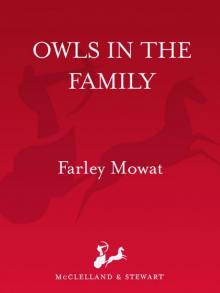 Owls in the Family
Owls in the Family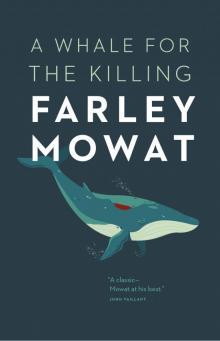 A Whale for the Killing
A Whale for the Killing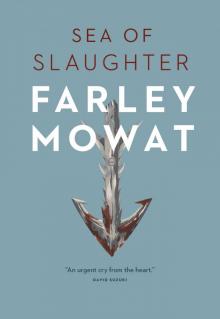 Sea of Slaughter
Sea of Slaughter The Curse of the Viking Grave
The Curse of the Viking Grave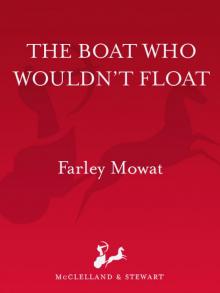 The Boat Who Wouldn't Float
The Boat Who Wouldn't Float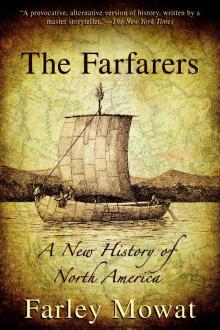 The Farfarers: Before the Norse
The Farfarers: Before the Norse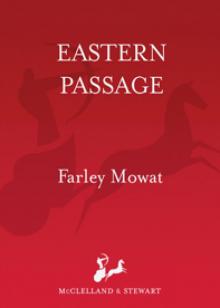 Memoir
Memoir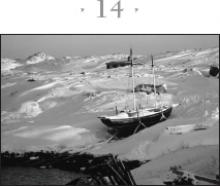 Bay of Spirits: A Love Story
Bay of Spirits: A Love Story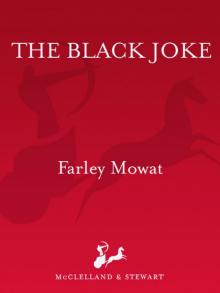 The Black Joke
The Black Joke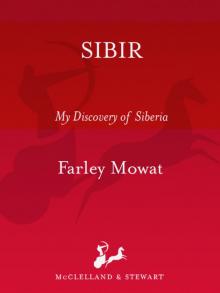 Sibir: My Discovery of Siberia
Sibir: My Discovery of Siberia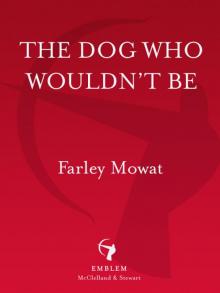 The Dog Who Wouldn't Be
The Dog Who Wouldn't Be Never Cry Wolf
Never Cry Wolf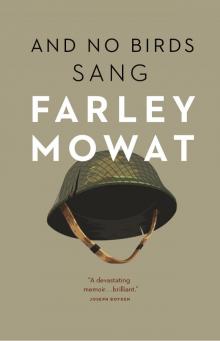 And No Birds Sang
And No Birds Sang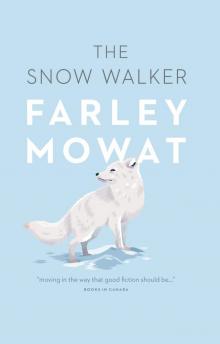 The Snow Walker
The Snow Walker Born Naked: The Early Adventures of the Author of Never Cry Wolf
Born Naked: The Early Adventures of the Author of Never Cry Wolf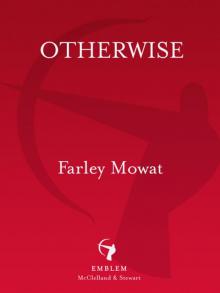 Otherwise
Otherwise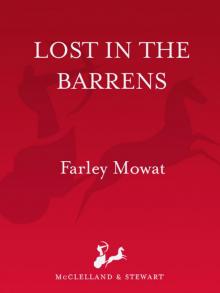 Lost in the Barrens
Lost in the Barrens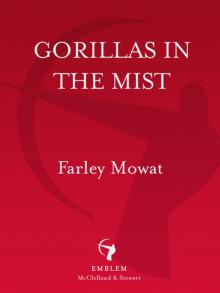 Gorillas in the Mist
Gorillas in the Mist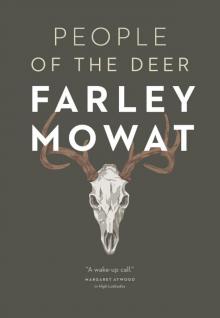 People of the Deer
People of the Deer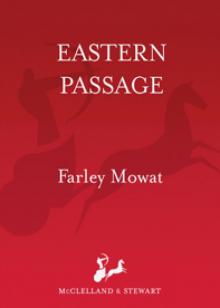 Eastern Passage
Eastern Passage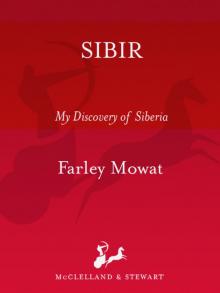 Sibir
Sibir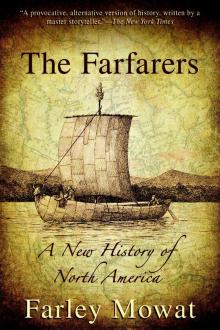 The Farfarers
The Farfarers A Whale For The Killing (v5.0)
A Whale For The Killing (v5.0)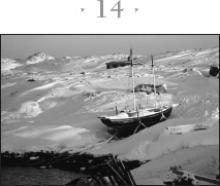 Bay of Spirits
Bay of Spirits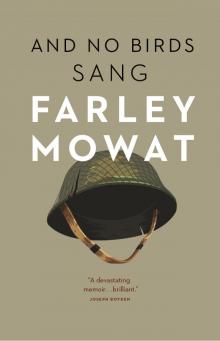 And No Birds Sang (v5.0)
And No Birds Sang (v5.0)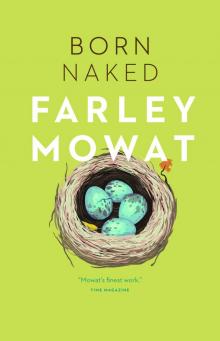 Born Naked
Born Naked